
Illustration © Sheri Amsel
Silky beach pea: Species at Risk recovery
Gulf Islands National Park Reserve
Once you learn this plant’s name, you already know a lot about the silky beach pea (Lathyrus littoralis). Yes, it has silky stems and leaves. It grows near the beach. And…yes, you guessed it…this plant belongs to the pea family.
What you might not know is how hard this rare plant works to survive and what we can do to help it.
Three reasons to love the silky beach pea:
1. It faces an uphill battle
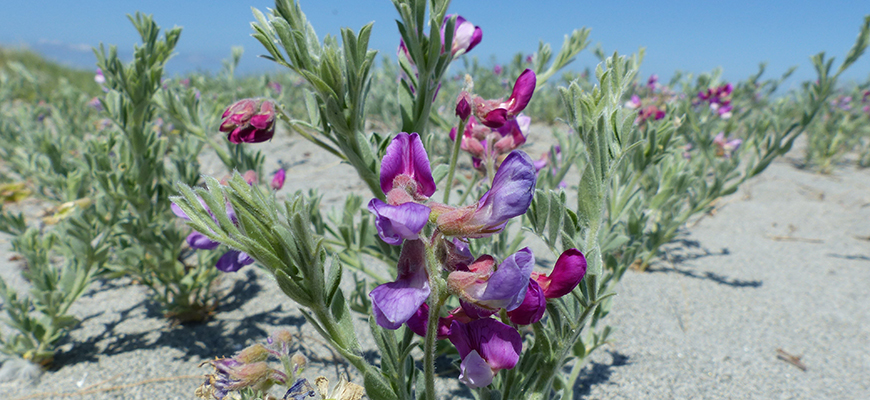
Odds are stacked against the silky beach pea. Deer eat it. Invasive plants push it out. People with dogs and off-road vehicles trample it. And extreme storms, coupled with rising sea levels, wash it off the dunes and sand spits.
Sidney Island in the Gulf Islands National Park Reserve is one of the few places in Canada where the silky beach pea grows.
2. It’s equipped for battle
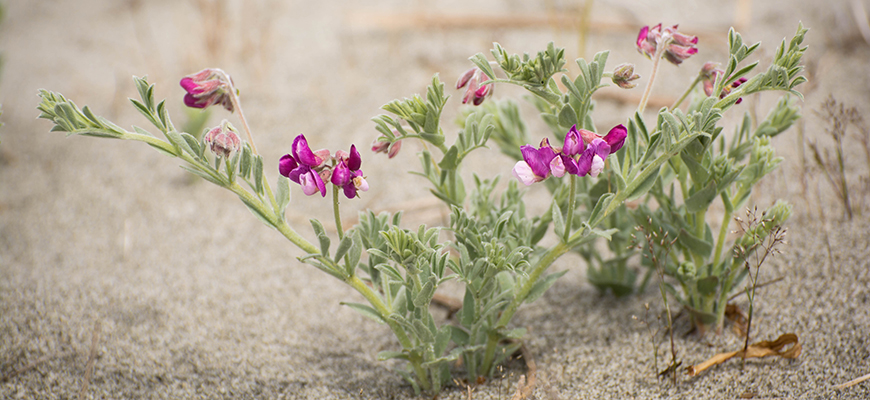
Imagine how hard it is to live on a patch of sand exposed to the elements. The pretty flowers of the silky beach pea mask its true nature: this plant is fully decked out with survival gear.
Hairs armour its stems and leaves and store moisture. They also shield it against blowing sand the way your hair protects your scalp.
Its underground stems and deep roots reach far down into the sand to search for water. Its roots also partner with bacteria, helping the plant to capture nitrogen in the nutrient-poor soil.
3. It travels the ocean
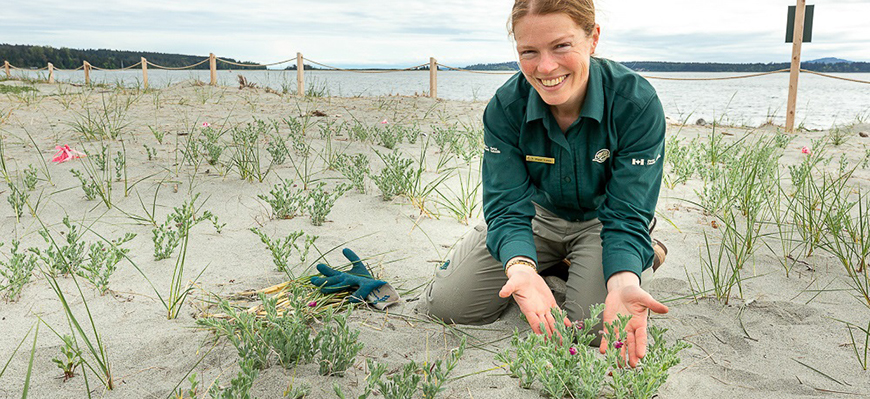
Seeds from the silky beach pea don’t spread far on their own, but this plant has another way to get around: by ocean voyage.
Winter storms wash the plant off the sand. These castaways float around in the sea, and occasionally, they land on a suitable area where bits of the underground stems attach and grow.
The current population of silky beach pea in Gulf Islands National Park Reserve may have made their way by sea. For many years, when scientists surveyed Sidney Island for rare plants, they didn’t find the silky beach pea. And then one year, they did.
Three ways to care for the silky beach pea:
1. Think big picture solutions
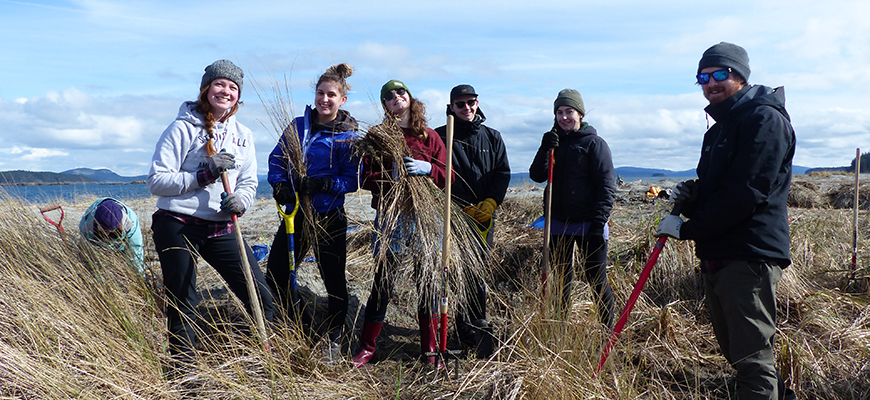
In the coastal sands ecosystem recovery project, park scientists focused on improving the area for many threatened species.
Parks Canada’s action:
Parks Canada scientists and hundreds of volunteers cleared invasive plants from a coastal sand area on Sidney Island. This made space for not only the threatened silky beach pea, but also other rare plants such as the contorted-pod evening-primrose and American glehnia.Action you can take:
Consider volunteering for Parks Canada and working on ecosystem restoration projects.
2. Do a little extra
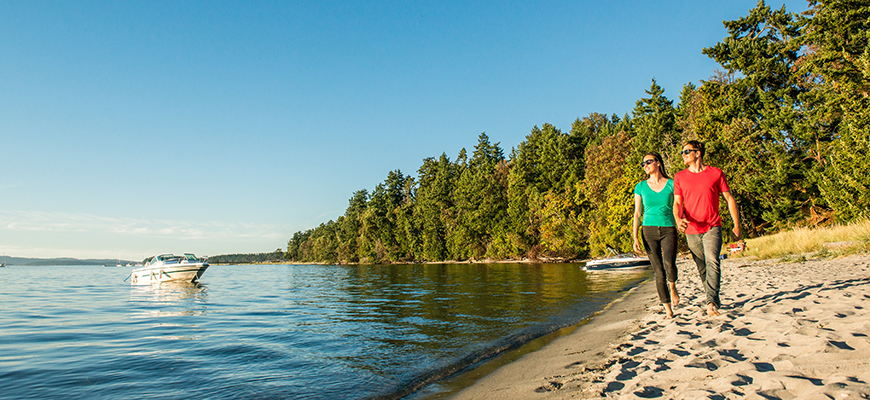
The silky beach pea on Sidney Island grows precariously near the ocean. Each winter storm threatens to wash it away.
Parks Canada’s action:
Park scientists cleared invasive plants around the silky beach pea. The rare native plant spread quickly to fill in the newly opened space.Action you can take:
When you visit the beach, keep to the lower part. Never trample plants that grow in the area above the high tide line. These plants already have a tough job to survive, you don’t want to make it any harder for them.
3. Understand the connections
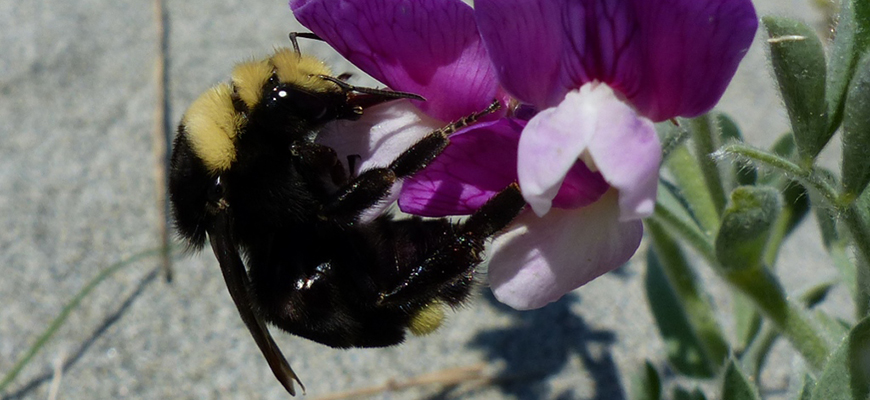
Everything is connected to everything else in nature. By restoring the coastal sand ecosystem, we helped the silky beach pea. We don’t yet know all the ways this plant helps other creatures.
Parks Canada’s action:
Not long after the silky beach pea’s recovery on Sidney Island, a park staff member spotted hundreds of bees gathering pollen from the rare plant. She took a photo for us to share with you. Because that’s part of what we do, help you to discover the wonder and beauty of nature.Action you can take:
Grow native plants in your garden or on your porch. The pollinators will be pleased you did.
Learn more about the silky beach pea and species at risk recovery
- Date modified :